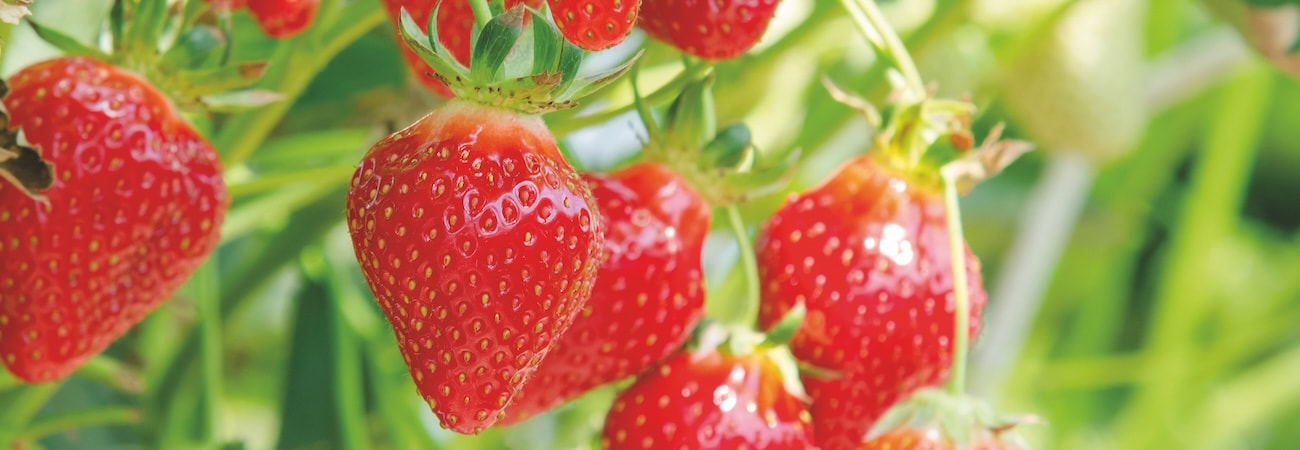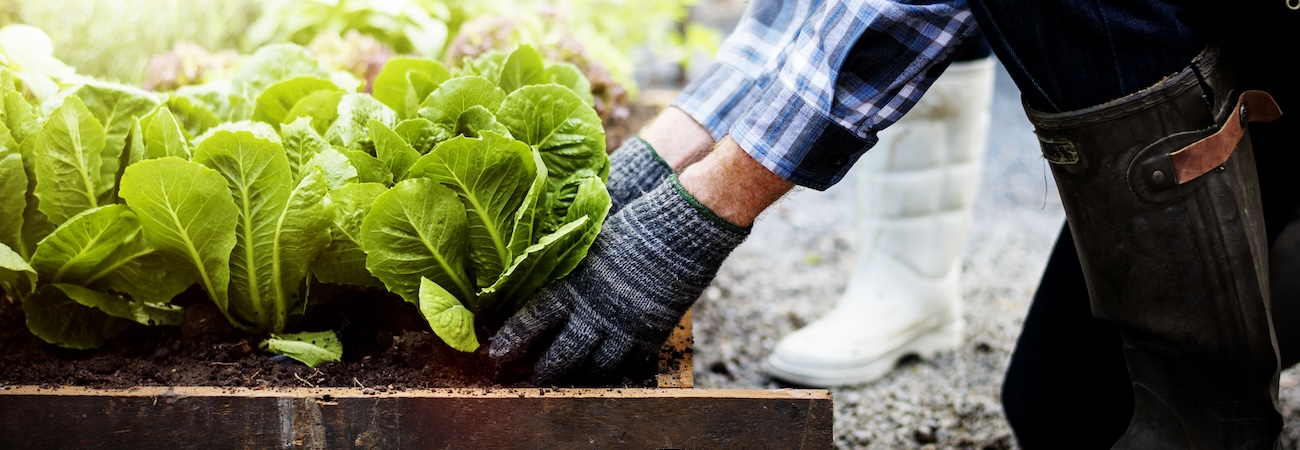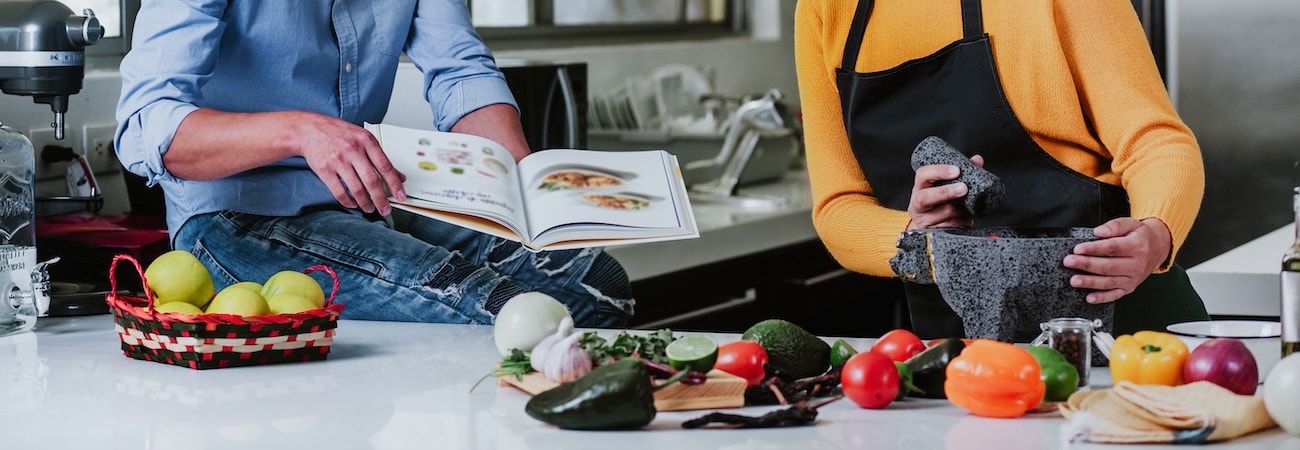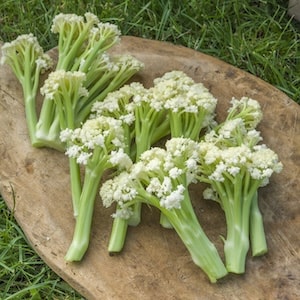
Ann’s Almanac – July
July is the beginning of that wonderful period when we get to eat what we’ve sown and grown. It’s time to enjoy delicious tomatoes, cucumbers, potatoes, strawberries and more. There really is little to beat the special feeling of pride as you gather food for the day and plan meals around your own homegrown harvest. And there’s still time to sow some more peas, beans, carrots and salad leaves to provide you with crops well into autumn.
Normally the hottest month of the year, watering becomes a daily task, lawns need regular mowing and weeds need weeding. And remember that anything growing in containers will need extra water as the soil dries out more quickly. In fact, water/feed/weed/repeat is my July gardening mantra!
It’s difficult to think anything but pleasant thoughts while eating a homegrown tomato.
– Lewis Grizzard


Jobs to tackle this month
My top tasks for July include:
- As you harvest potatoes, peas, garlic and beans you’ll create space for new crops. Keep sowing swiss chard, kale, spinach, pak choi, parsley, salad leaves, cauliflower and cabbage.
- Remove side shoots from cordon tomatoes and water and feed regularly. Now’s a good time to apply some fresh compost to any pots to give them a nutrient boost.
- Pick cucumbers while they’re still nice and firm. A slice of cucumber in a G&T makes a lovely change to the traditional lemon.
- Keep picking courgettes to encourage the plant to keep producing. Share with friends and neighbours until they beg you to stop!
- Early potatoes will be ready for lifting, but check one plant first.
- Give sweetcorn a gentle shake to help spread the pollen.
- Carefully lift and then dry and store your garlic. If you fancy plaiting them, leave the stalks until they’re dry but not brittle.
- You’ll need to stop harvesting rhubarb early this month. Apply a layer of mulch or compost and leave the crowns to recover ready for next year.
- Regularly picking sweet peas encourages more flowers. Pick in the morning or evening when the temperatures are at their coolest.
- It can get very hot in the greenhouse so leave the door and vents open.
- Remove duckweed from ponds and keep the water level topped up.
- Tie in climbers and stake dahlias and other tall plants to prevent flopping.
- Keep up the fight against slugs, snails and other pests. Encourage birds and other wildlife into the garden and they’ll lend their support.
- Prune shrubs that flowered in early summer.
- One of the least strenuous of gardening jobs must be deadheading. With a careful snip here and a pinch there your plants will be revived and freshened.


From plot to plate
Here are some of the delicious crops I harvest in July:
- Runner Beans: One of the easiest of vegetables to grow, runner beans are an iconic part of summer but it’s possible to tire of them before the end of the season. Yes, they can be frozen although I never find this very successful. I prefer to make pickle (the River Cottage recipe is my favourite) or slice and simmer them in a spicy tomato sauce with chilli and garlic, until tender.
- Strawberries: Keep these soft fruits out of the fridge to help their flavour develop, and don’t wash them until just before you’re ready to feast. Nobody loves a soggy strawberry! If you get a glut, strawberries and rhubarb combine beautifully in a crumble, served with custard. Purée any fruits that are a little past their best with sugar and a squeeze of orange juice and sandwich between two thin layers of shortbread. I’m salivating as I type! Of course they can also be made into ice-cream, added to Pavlova, mashed into Eton Mess, plopped into Pimm’s or simply topped with cream. I’m making strawberry gin this weekend – wish me luck!
- Gooseberries: Low-maintenance and long-lived, it’s strange that gooseberries aren’t more popular. They’re hardy, fairly disease resistant and grow happily in any soil. And of course, the real joy is gained from the gorgeously sweet/sour fruits, providing that the blackbirds don’t get there first! Modern varieties can be trained as standards or cordons, meaning that they won’t take up too much space. Gooseberry fool, gooseberry crumble and gooseberry pie are oldies but goodies. Focaccia bread studded with gooseberries prior to baking makes a wonderful partner to strong cheese. And the sweet red dessert varieties are lovely eaten raw, as you would grapes. When I’m cooking gooseberries, I like to splash some homemade elderflower cordial in to accentuate the flavours.


Recipe of the month
Ann’s courgette chutney recipe
You will need:
- 1kg courgettes, cut into 1cm dice
- 4 large red onions, cut into 1cm dice
- 4 garlic cloves, crushed
- 75g root ginger, finely chopped
- 2 tsp mustard seeds
- 1 tsp coriander seeds, roughly ground
- 500ml white wine vinegar
- 200g sultanas
- 350g white granulated sugar
- 1 tbsp sea salt
- 4 tbsp fresh coriander chopped
Method:
- Place the first 8 listed ingredients in a large preserving pan and slowly bring to the boil. Reduce the heat and simmer until the vegetables begin to soften (about 10 minutes).
- Add the sugar and salt to the pan and continue to simmer until most of the liquid has evaporated. Stir from time to time to prevent sticking and to ensure the sugar has dissolved.
- To test for readiness, drag a spoon in a line through the mixture along the bottom of the pan. If it leaves a clean channel, then the chutney is ready. If the mixture simply flows back into the channel then it needs to simmer for longer.
- Once the mixture is ready, add the fresh coriander and stir.
- Using a wide-necked funnel, carefully pour into sterilised Kilner jars and seal. Wipe the jars and label when cool.
- Leave to mature for a couple of months and then enjoy with cheese, cold meats or sausages.
Fancy growing something new?


We all have our favourites – tried and trusted varieties of fruit and veg that we grow each and every year. But it’s also fun to try something new. Here’s my suggestion:
A delicious alternative to standard cauliflower, Cauliflower ‘Fioretto 75’ is tender, sweet and nutty, producing multiple small florets on long stems. Taking just 60 days to mature, it’s great for later sowings and filling any gaps as they appear. It can be eaten raw in salads, roasted, steamed or pickled.
You may also be interested in
- Flower seeds to sow in July
- Vegetable seeds to sow in July
- Ann’s allotment and gardening guide – June
- Ann’s allotment and gardening guide – August
Lead image: Strawberry ‘Flamenco’ (Everbearer/ All Season) from Dobies
